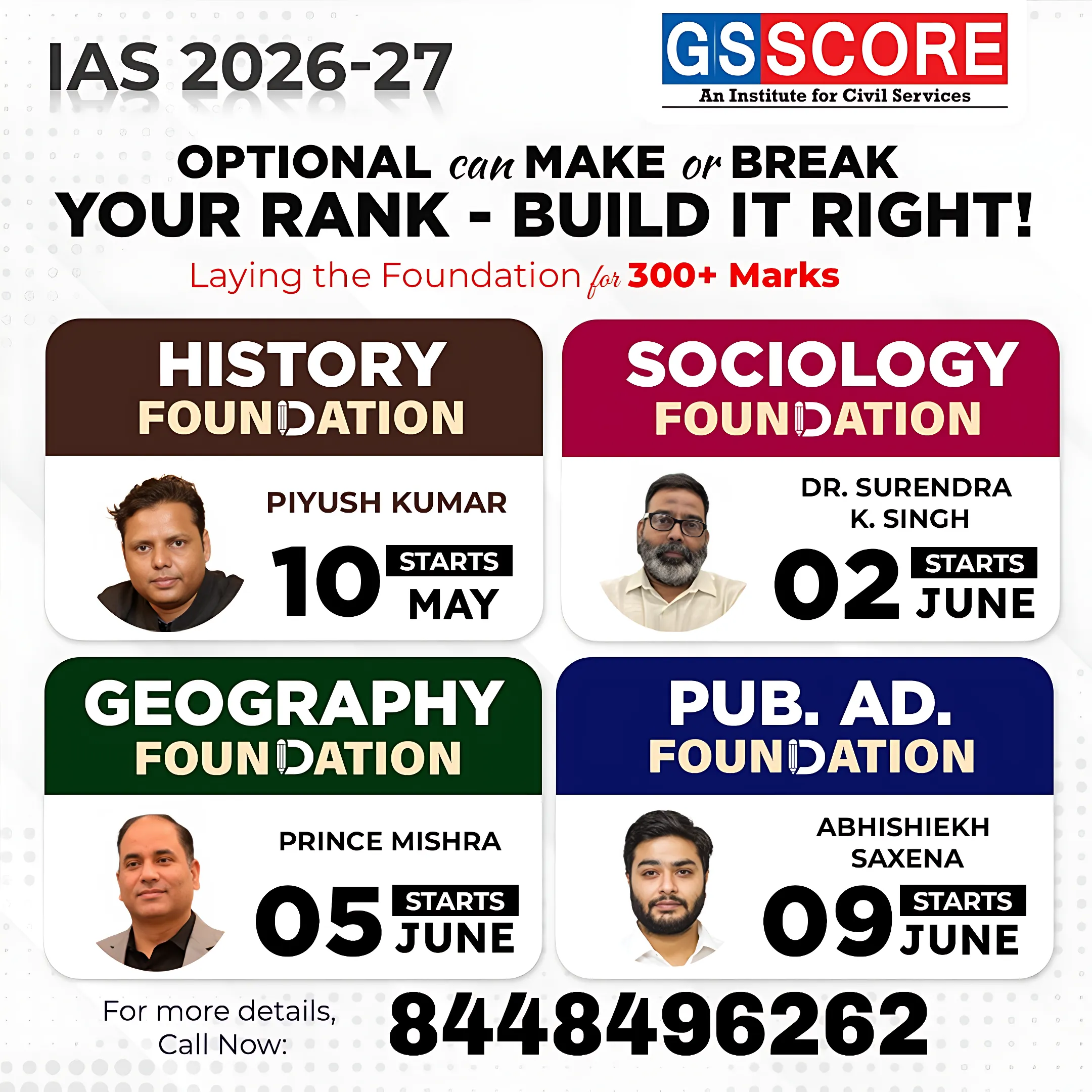


Instruction:
- There will be 2 questions carrying 10 marks each. Write your answers in 150 words
- Any page left blank in the answer-book must be crossed out clearly.
- Evaluated Copy will be re-uploaded on the same thread after 2 days of uploading the copy.
- Discussion of the question and one to one answer improvement session of evaluated copies will be conducted through Google Meet with concerned faculty. You will be informed via mail or SMS for the discussion.
Question #1. Define the concept of carrying capacity of an ecosystem as relevant to an environment. Explain how understanding this concept is vital while planning for sustainable development of a region.
Question #2. What is wetland? Explain the Ramsar concept of ‘wise use’ in the context of wetland conservation. Cite two examples of Ramsar sites from India.
(Examiner will pay special attention to the candidate's grasp of his/her material, its relevance to the subject chosen, and to his/ her ability to think constructively and to present his/her ideas concisely, logically and effectively).
STEPS & INSTRUCTIONS for uploading the answers
Step 1 - The Question for the day is provided below these instructions. It will be available at 7:00 AM.
Step 2 - Uploading of Answers : Write the answer in A4 Sheet leaving proper margins for comments and feedback and upload the PDF in MY ACCOUNT section. Click on the option of SUBMIT COPY to upload the PDF.
Step 3 - Deadline for Uploading Answers: The students shall upload their answers by 7:00 PM in the evening same day. The first 50 copies will be evaluated.
Step 4 - Feedback : Mentors will give their feedback for the answers uploaded. For more personalised feedback, join our telegram channel by clicking on the link https://t.me/mains_answer_writing_cse . A one-to-one session will be conducted with the faculty after copy evaluation in 72 Hrs.
Model Answer
Question #1. Define the concept of carrying capacity of an ecosystem as relevant to an environment. Explain how understanding this concept is vital while planning for sustainable development of a region.
Answer:
In the context of environment, the carrying capacity of an ecosystem is the size of the population or community that can be supported indefinitely upon the available resources and services of that ecosystem. Carrying capacity of an ecosystem depends upon factors like population, use of resources, competition etc.
Today due to increasing population, associated exploitation of resources, changing climatic conditions have affected the carrying capacity of an ecosystem. Hence, in order to ensure sustainable development it is necessary to take into account carrying capacity of an ecosystem.
Importance of carrying capacity for planning sustainable development:
- For controlling population growth: Unceasing growth of world population, and the way ecosystems have been exploited to meet our consumption requirements makes it important to take into consideration carrying capacity for sustainable development.
- To ensure sustainable urbanisation: Growth of urban population beyond carrying capacity of urban areas will lead to problems like pollution, slums, urban poverty etc. Hence, urban amenities can be made available to only limited population which can be known by understanding carrying capacity.
- To avoid land degradation: Knowing carrying capacity of an agricultural land helps us understand how much production can be derived from such land. This will help us avoid its exploitation.
- For biodiversity conservation: In certain environments, space is the main determinant of the carrying capacity. The efforts towards biodiversity conservation without taking into account carrying capacity may lead to man-animal conflict.
- To avoid pollution: Economic development beyond carrying capacity of an ecosystem leads to problems like pollution. Hence for clean economic development it is important to know about the carrying capacity of the region. Thus the concept of carrying capacity should be at the centre of the growth model. This will ensure that sustainable development is achieved by avoiding negative externalities of the current growth model.
Question #2. What is wetland? Explain the Ramsar concept of ‘wise use’ in the context of wetland conservation. Cite two examples of Ramsar sites from India.
Answer:
Wetlands are lands transitional between terrestrial and aquatic systems where the water table is usually at or near the surface or the land is covered by shallow water.
The Ramsar Convention on Wetlands defines wetlands as “areas of marsh, fen, peat land or water, whether natural or artificial, permanent or temporary, with water that is static or flowing, fresh, brackish or salt, including areas of marine water the depth of which at low tide does not exceed six meters”.
Ramsar concept of wise use:
Wise use of wetlands is the maintenance of their ecological character, achieved through the implementation of ecosystem approaches, within the context of sustainable development.
Wise use can thus be seen as the conservation and sustainable use of wetlands and all the services they provide, for the benefit of people and nature.
For example, if a wetland is used as a source of food and water by individuals of a species, then use of its resources should not change this.
Two ramsar sites in India are:
- Harika Lake in Punjab, which is an artificial site.
- Keoladeo Ghana Wetland in Rajasthan, which is an important bird sanctuary.
Wetlands provide various ecological services like flood mitigation, drought proofing, local climate regulation, habitat, food and water provision etc. But their unsustainable use has led to their destruction. Ramsar convention tries to secure these important sites. The goals of this convention should be achieved for furthering the services provided by wetlands


